A Tale of Two Gliders
One content little glider wakes up just as the sun goes down and the cicadas stop calling. It is a warm humid night, perfect for eating sap from a Eucalyptus resinifera tree. The glider calls out to its family, and then leaves its den in a Eucalyptus grandis tree, gliding through the air in one giant leap. It makes a small sound as it crashes into a tree, and then crawls down to where the sap is flowing from a cut in the tree. Another glider soon joins it, a family member also going to feed from the same tree. They greet each other, but suddenly they hear a strange noise, and they are bathed in a red light. They freeze, look down, but soon realize it is just students watching them, and the students have never harmed them. The happy little glider goes on to eat and play all night, swooping back to its tree just as the sun appears.
A second little glider is sleeping peacefully in its tree, when it is disturbed during the day by a large noise. It sounds like an enormous creature has knocked down a tree. That night, the glider leaves its den like all the other gliders, but it realizes that the tree it wants to feed from is no longer there. In fact, most of the large trees in the forest are now gone. The unfortunate, sad glider has to find a new home now, because there is no longer a place for it here.
The students of The School for Field Studies worked hard this last week to help prevent sad yellow bellied gliders. The yellow-bellied glider, Petaurus australis, is a nocturnal, arboreal, sugar-loving marsupial found in Eastern Australia. There are many populations of these animals, but there is a very threatened group near our home on the Atherton Tablelands. These animals are found in the Tumoulin State Forest and Tumoulin Forest Reserve, an area that might be open soon to logging. This logging could seriously affect the small vulnerable glider population here.
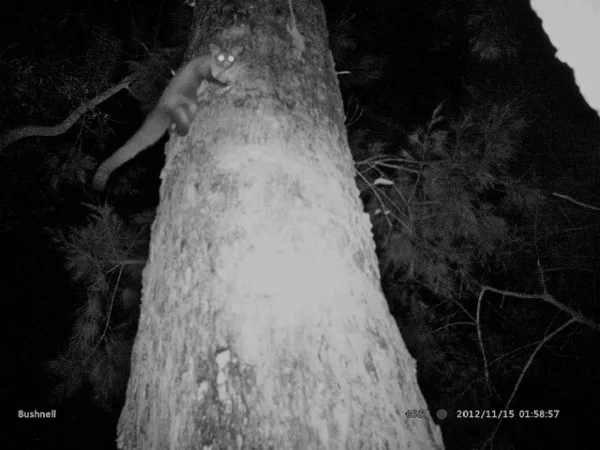
Photo of a glider taken by remote camera during one of Dr. Sigrid Heise-Pavlov”s Direct Research activities.
The students, along with a group of volunteers led by John Winter, spent three days last week observing these creatures and searching for evidence that they are in areas that might soon be logged. The students went out into the field during the day and looked for signs that the gliders are in the area, or that there are trees in the area that the gliders could potentially use in the future. If there is a “feed tree” that the gliders consume sap from or a “den tree” where they roost, then logging cannot occur within a 100 meter or 50 meter radius, respectively. It is important to know where these trees are so the loggers can be correctly informed and the gliders can remain undisturbed.
Research of this sort will continue during the Directed Research coming up next week. The data collected during the field exercise and the DR will be used to help this vulnerable species. Logging and habitat destruction have lowered glider numbers to a dangerous level, and the information on habitat use and behaviour will go a long way in protecting the habitat they have left.
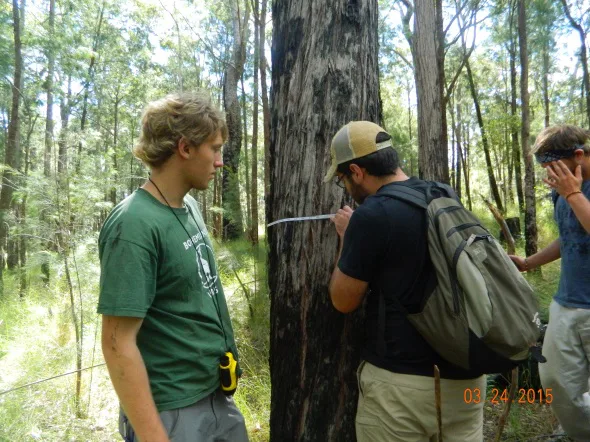
Photo credit Kylie Vanchena.
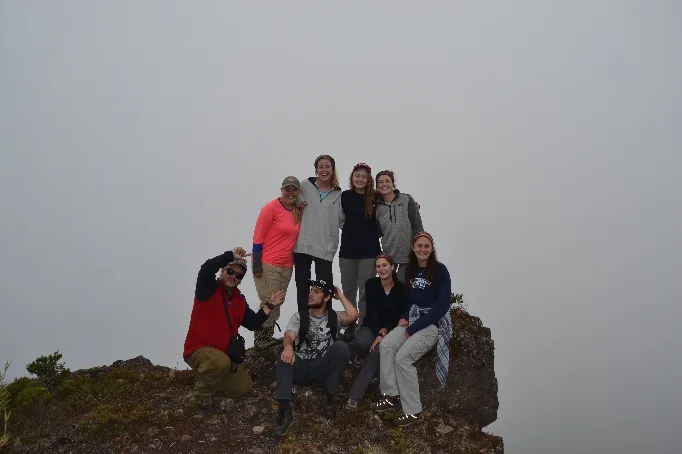
Photo credit Kylie Vanchena.
Related Posts
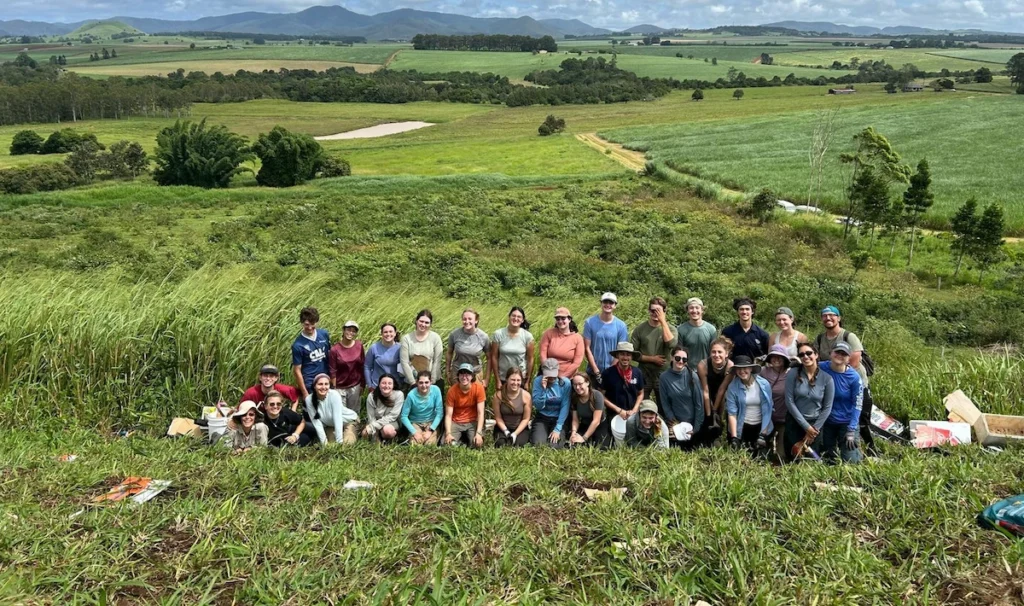
Cinder Cone Chronicles: Lessons from Drought, Data, and Determination
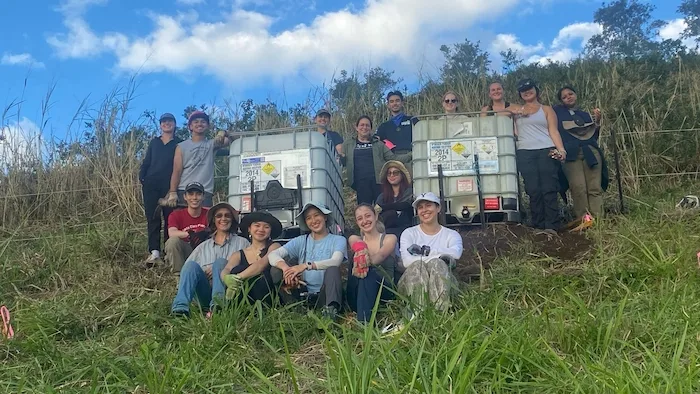
Restoration on a Cinder Cone: A Syntropic Story

